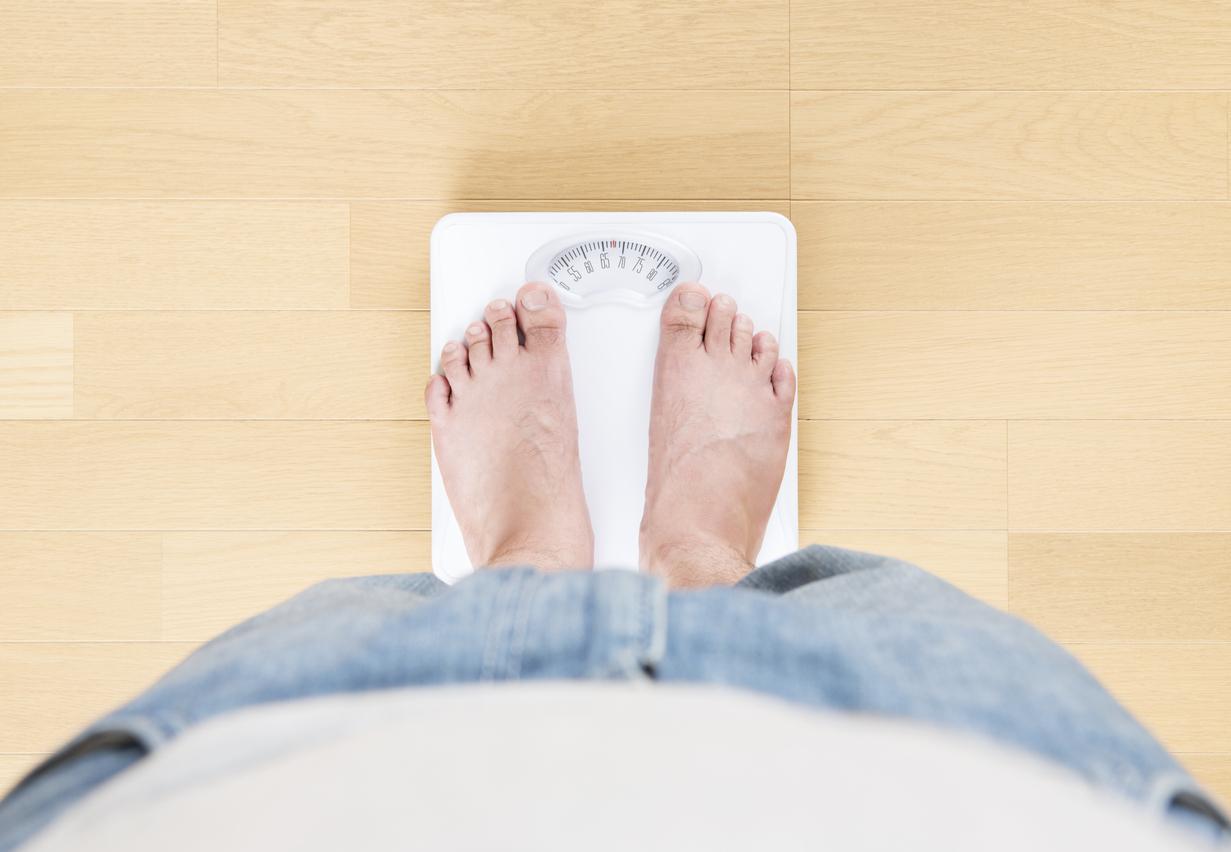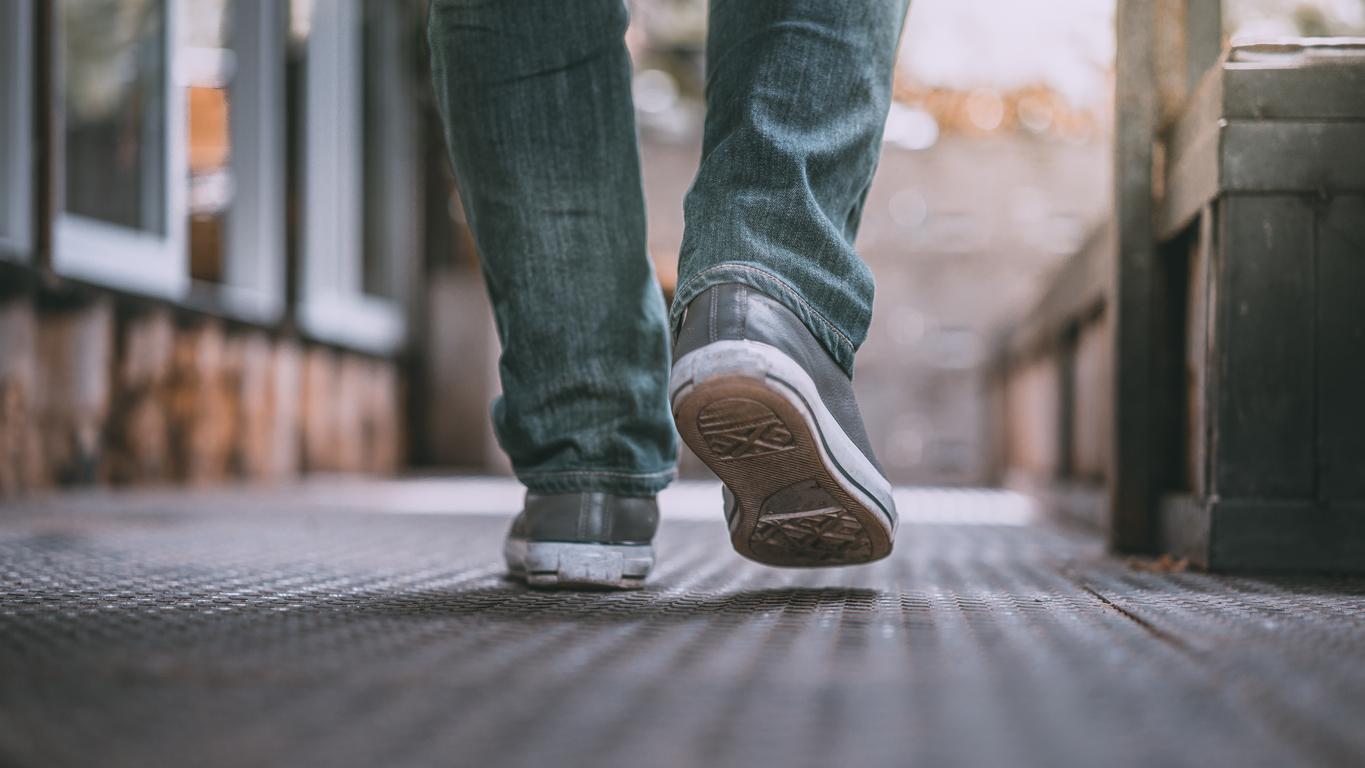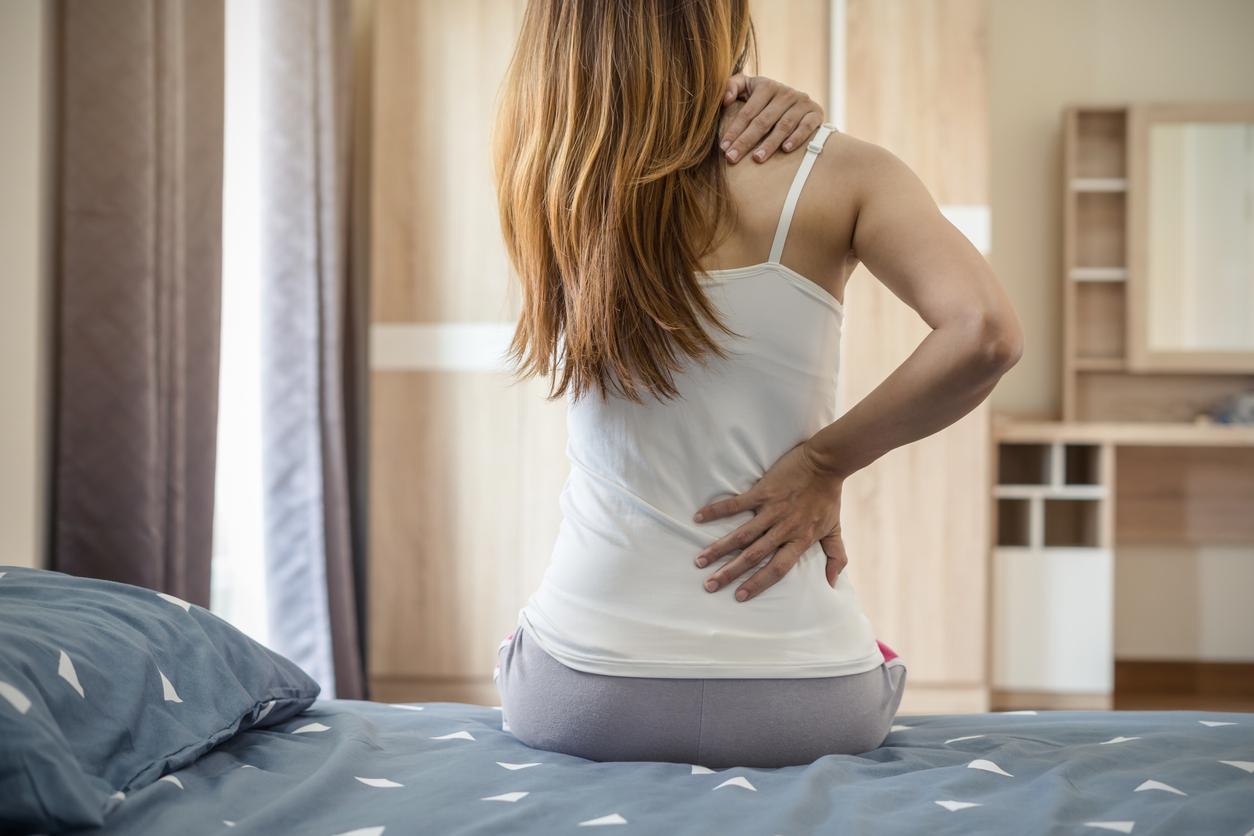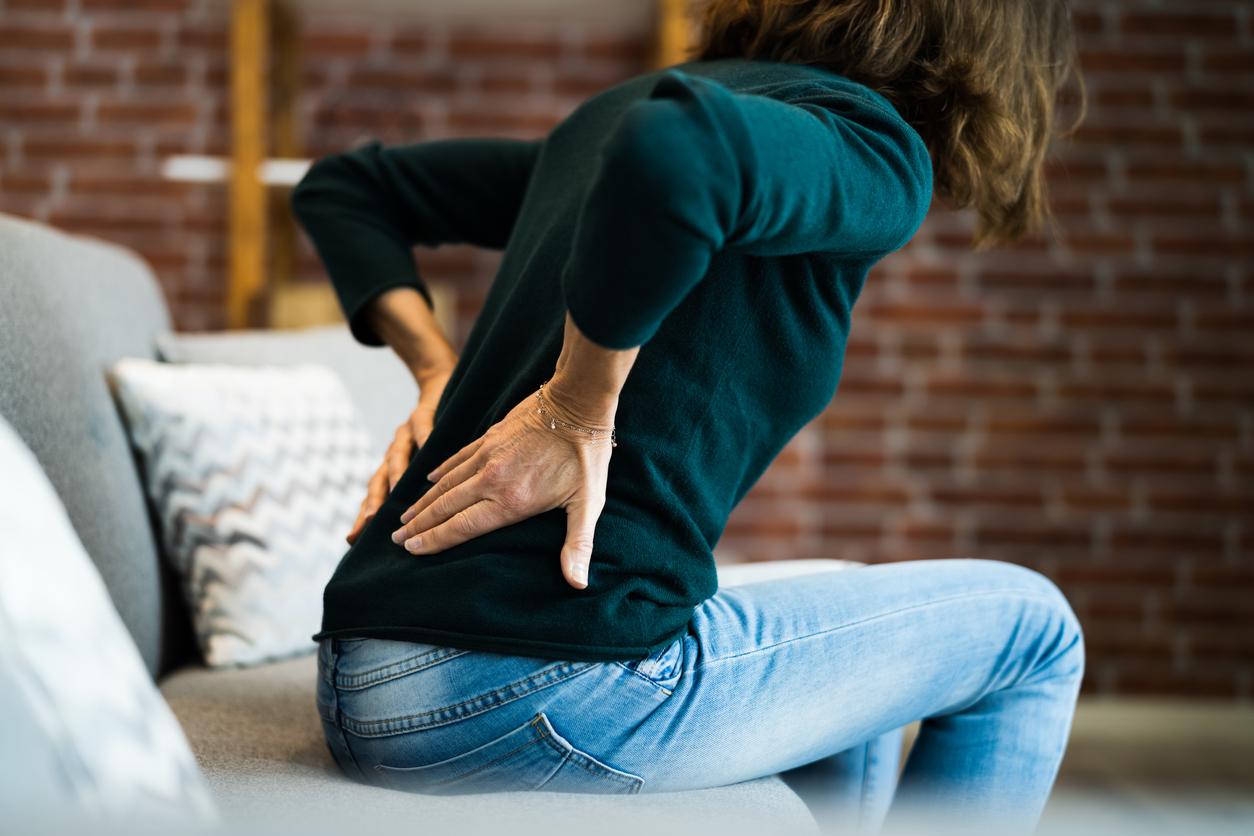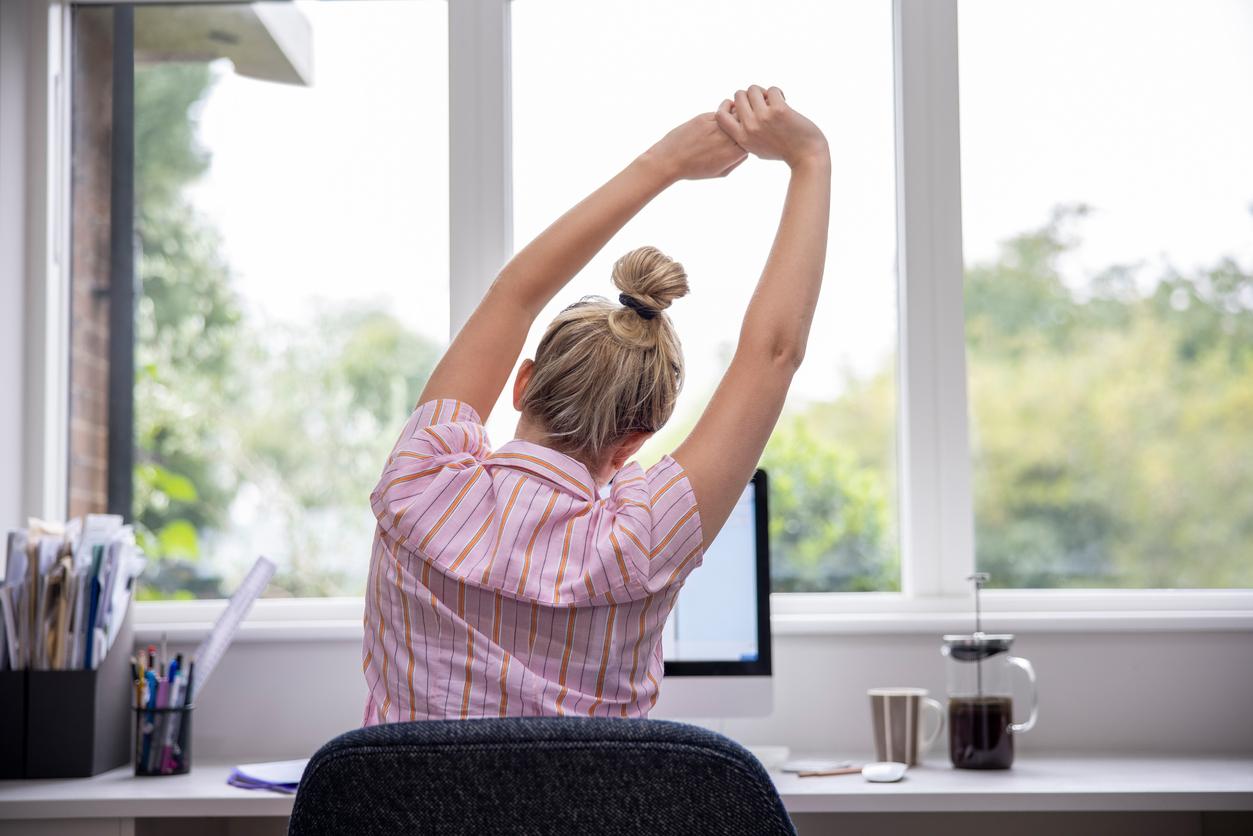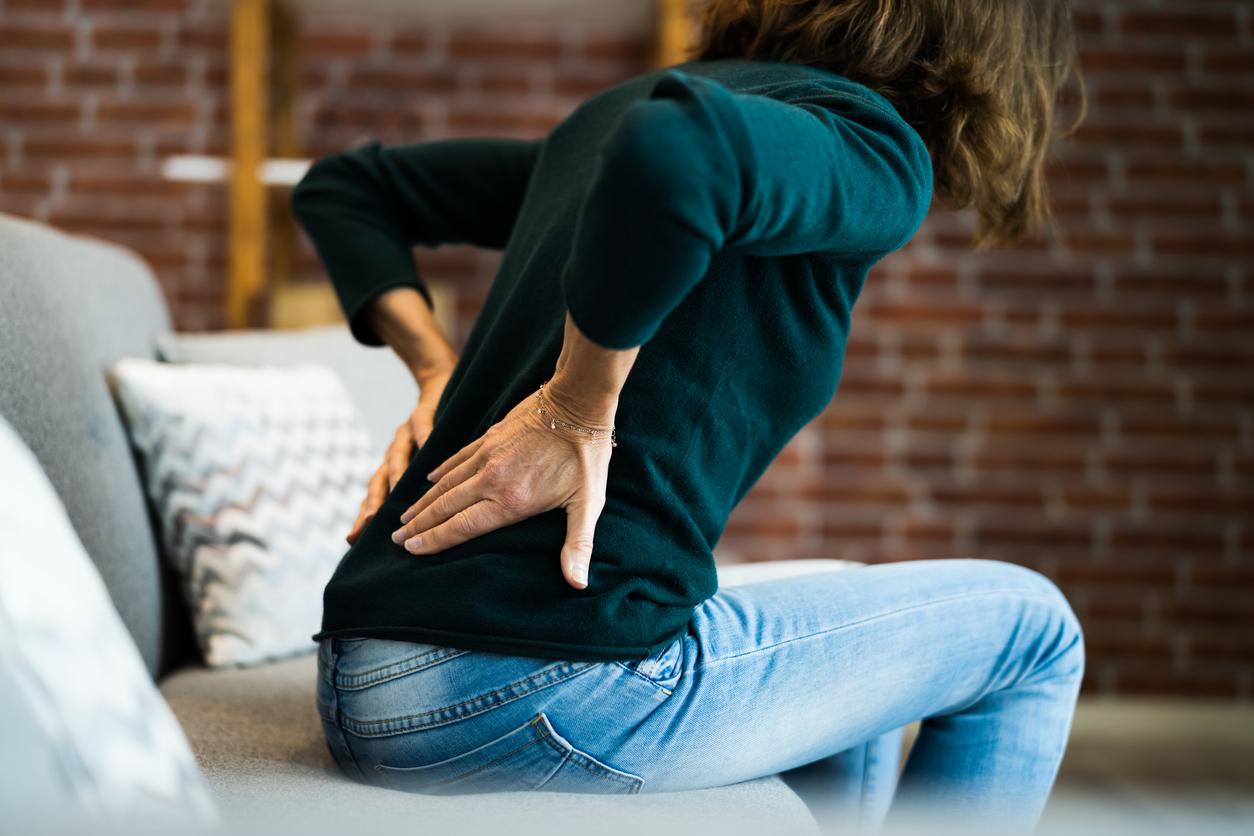Acute back pain or kidney pain is called “lumbago” when it is accompanied by a blockage of the back and it corresponds to the “common acute low back pain” of doctors. It is necessary to avoid its passage to chronicity.
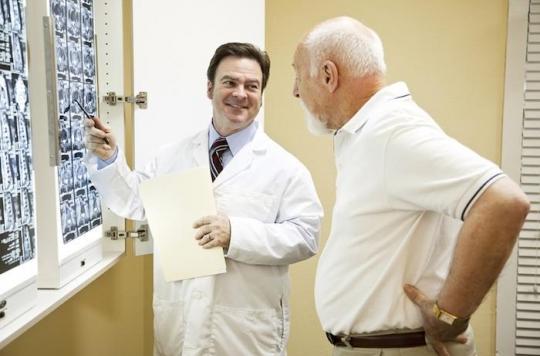
As part of World Spine and Pain Day, the editorial team took a look at back pain.
What is lumbago?
Lumbago, otherwise known as “acute low back pain”, is pain in the lower back, just above the pelvis, which is usually accompanied by contracture of the back muscles.
The pain appears suddenly, usually following an effort to lift, or when the back is rotated. It can be very intense: we sometimes speak of a sensation of “stabbing” in the back.
The pain is typically calmed with rest and increased with straining, coughing, or having a bowel movement.
It only lasts a few days to a few weeks and is usually accompanied by muscle contracture that interferes with movement.
What are the causes of back pain?
In the vast majority of cases, its cause is linked to a malfunction of the spine, mainly due to damage to the various structures of the back: the discs between the vertebrae (tear of the disc), the posterior articular joints between vertebrae (osteoarthritis) and ligaments or muscles. Often all the lesions are intricate.
It should not be confused with a back pain which wakes up in the second part of the night and which is accompanied by prolonged stiffness in the morning upon waking, stiffness which fades during the day and with effort. In the latter case, it is an “inflammatory low back pain” which must suggest all other causes, and in particular spondylarthritis.
What promotes the onset of back pain?
Age is of course associated with increased back pain, but episodes of back pain in the past, insufficient abdominal or back muscles in your 50s, or a history of back pain in the family promote the onset of back pain.
Pregnancy also promotes back pain: the increased weight and distension of the uterus and stomach muscles move the body’s center of gravity forward, causing the back to arch excessively.
The constraints related to a professional, domestic or leisure activity, are also elements that promote low back pain, such as bad postures (painful positions, prolonged sitting), carrying heavy loads, exposure to vibrations or during falls.
What can be done about back pain?
A few tips can help with pain relief: take the pain medication you have available and continue your usual activities, adapting them to keep your back upright. Care must be taken not to force and to avoid sudden movements.
It is also interesting to resort to muscle relaxation, especially in the event of associated stress. Here are some relaxation positions:
- Stretched out with your back flat on the floor, your legs bent resting on the seat of a chair, your hands crossed behind your head.
- Lying on your back, bring both knees to your chest, one after the other. Hold both knees together and pull them towards the chest.
- Kneeling, sitting on heels, back rolled up, forehead against the floor and framed by the elbows, forearms resting on the floor.
These positions that allow the back to rest can be practiced for a few moments every day.
How to relieve acute back pain?
In the event of lumbago, the most important thing is to reduce the pain as soon as possible, both to relieve themselves, but also to relieve the contracture of the muscles which is harmful to them.
Pain medications are commonly referred to as “pain relievers”. It is possible to take paracetamol (3 to 4 grams per day) or a combination of paracetamol and morphine derivative if the pain is intense. A non-steroidal anti-inflammatory drug (or NSAID) such as ibuprofen, ketoprofen can be combined with it if the pain does not regress rapidly and in the absence of any contraindication (anticoagulant treatment, peptic ulcer, renal failure, etc.).
It is essential to maintain physical activity, even minimal. Inactivity increases the risk of disrupting the proper functioning of muscles, which are essential for supporting the spine. The resumption of an adapted physical activity is therefore the best guarantee for a rapid recovery.
When to see a doctor
In 90 to 95% of cases, back pain is a mild condition that rest and pain medication will relieve without a doctor’s help.
But sometimes the deterioration of an intervertebral disc, which is common after a certain age, is not the cause. A number of warning signs should suggest another disease and seek immediate medical attention:
- The onset of pain at less than 20 years or more than 50 years.
- An appearance in the aftermath of a violent trauma (road accident or violent fall).
- A background of cancer, drug addiction or HIV infection.
- Taking prolonged treatment with cortisone.
- Back pain of progressive onset and not improved by rest.
- Pain predominant at night with nocturnal awakenings and back pain in the morning for more than 15 minutes.
- Altered general condition or fever.
- The onset of paralysis of the lower limbs, loss of urine or stools, with disturbances in sensitivity.
- The existence of pain in the chest.
Just one of these signs is enough to call into question the diagnosis of “common acute low back pain” and should lead to urgent medical attention.
When to do x-rays or other exams?
In acute pain secondary to a common back pain (called “acute common low back pain”), x-rays of the lumbar spine are not helpful in the vast majority of cases.
On the one hand, they can be normal while the pains are very important, on the other hand, from the forties, and sometimes in the even absence of pain, the x-rays very often show osteoarthritis, with what l ‘a pinching of the intervertebral disc and osteophytes (commonly known as “parrot beaks”) is called.
A fortiori, there is no need to perform a CT scan or MRI of the spine.
Additional examinations are only necessary when a cause other than the low back pain of disc origin is suspected.
Should you rest in case of lumbago?
Bed rest is absolutely not recommended, scientific studies have even shown that it paradoxically risks prolonging pain. This is due to the disruption of the functioning of the muscles that it induces.
An early resumption of activities of daily life is therefore recommended for better protection of the muscles and to promote healing.
In the event of professional activity and if the pain is not too great, a work stoppage is not always necessary. When the doctor prescribes a work stoppage, he takes into account the nature of the work and the routes to get there.
If the work is sedentary with short transport times, the work interruption is not systematic. On the other hand, if the work is physical and the transport is long and difficult, the stop will be adapted to these constraints (from 3 days on average in the case of light physical work, to five weeks in the case of heavy physical work).
How does lumbago progress?
Thanks to early treatment for pain and the preservation of moderate physical activity, 9 out of 10 common acute low back pain heals within a few days (less than four weeks), but recurrence is possible in the following months or years.
Acute low back pain that does not heal in three to four weeks is at risk of becoming chronic and requires a new consultation and reassessment with the doctor, or even an infiltration.
Chronic low back pain (more than 3 months of evolution) is, in fact, more complex to treat because it is then associated with a pronounced disorder of the functioning of the back muscles, the main support of the body.
How to avoid acute low back pain?
To avoid low back pain, it is important not to be too sedentary and to have a good position of the back in the gestures of daily life.
The fight against a sedentary lifestyle involves regular physical activity: sport or leisure physical activity (dance, yoga, Tai Chi, etc.). Most physical activities are beneficial if they are practiced regularly (you might as well choose one that pleases so that its practice is regular) and in good conditions, that is to say if the effort is preceded by a warm-up, if it is progressive and adapted to physical capacities, with well-mastered technical movements and quality equipment.
To prevent low back pain, it is also necessary to adopt good postures in everyday life and at work: be well seated with your back straight in front of your workstation, keep your back straight when lifting a load (it is better to bend your legs ), carry heavy loads close to the body and not at arm’s length, or even divide them in two, one for each arm, so as to keep the back straight. To sweep, vacuum or even dig in the garden, it is better to bend forward by making a “forward lunge” – one foot in front of the other like fencers – than to lean forward, which will bend. the hinge between the back and the pelvis.
.










